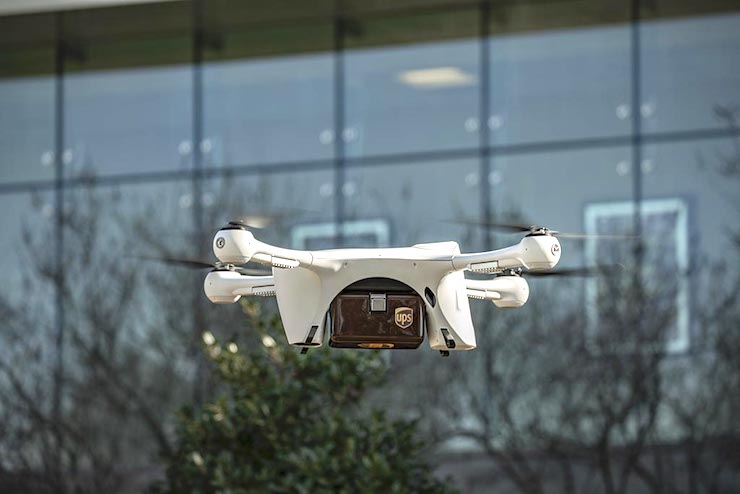
We’ve been waiting and waiting, and now it’s finally here! Well, sort of. Google, Amazon, Walmart, and UPS have all been competing to be the first service to offer deliveries via drones for some time now. So which shipping conglomerate won the contract? Congrats to UPS! But before you get your hopes up and sit in front of your window to watch a drone deliver the goods you ordered there are some things you need to know.
The first question is why it took so long for this to become a reality. After all, drones are being used all over the United States of America in numerous fields. Drones have also been successfully making daily deliveries of medical supplies in Rwanda, Ghana, and Switzerland. Google’s Wing has even completed an 18 month trial for deliveries of goods from shops and cafes with drones in Australia. So why has it taken so long for America, one of the fastest growing technological nations in the world, to adapt a system that allows drones to make deliveries to residents. What it boils down to is that fact that finding a way to create a logistically sound, efficient, and safe flight plan for these drones was a nightmare.
The United States of America has the most crowded airspace in the world. The National Air Traffic Controllers Association says that on average there are 87,000 commercial flights flying over the US daily. That doesn’t even begin to take into consideration any government or military flights. Though drones fly at a lower altitude, they still pose a risk to other aircraft. The FAA has also been struggling with how to make any drones flying remotely identifiable. On top of that, the US has more no-fly-zones than any other country. Some of these no-fly-zones include over national parks, government buildings, airports, public venues, military bases, university and school campuses (without permission), flying over people at night and out of line of sight, and many more. But over the last several months UPS along with Matternet, under the jurisdiction and approval of the FAA has been experimenting with drone deliveries.
In Raleigh, NC, UPS has logistically been carrying out drone deliveries with Matternet across two WakeMed hospital campuses. The pilot program has seen 1,100 medical samples safely transported the 150 meters between the hospital locations. The drones fly autonomously, while being monitored by a pilot, through a predetermined route that has been approved by the FAA. Now the FAA has granted UPS further freedom to continue this project with a license that will allow them to expand to 20 more hospitals in North Carolina.
The standard license a drone pilot needs to operate a drone commercially is a Part 107. To be able to fly a drone for commercial deliveries a Part 135 license is needed. This is the same license that any commercial aircraft pilot is required to have. It allows the pilot to operate over people, at night, and in the case of an autonomous drone out of line of site and with multiple flight plans. Now that UPS has been granted a Part 135 they are ready to move onto the next phase of drone delivery trials, stretching beyond the WakeMed hospitals.
Wing has also been granted a limited Part 135 to begin testing with deliveries from a Walgreen’s in Christiansburg, Virginia. The main difference is that Wing will only be able to send out 1 single drone delivery at a time, while UPS will be able to send out multiple drones. Also, UPS will be delivering to trained individuals at designated pick up sites for each hospital campus. While Wing is still working out the logistics of its deliveries, they hope to have routes approved to go directly to consumer homes.
So while drone deliveries are not a full reality here in the United States yet, they are getting closer. For UPS to be granted a Part 135 allowing them to operate unlimited flights between 20 different hospitals is a huge step in the right direction. When they applied for the Part 135, UPS estimated it would take a year to come through. The license was granted in a number of months instead, pushing the timeline up greatly. The fact of the matter is, that when it comes to logistically planning a consumer drone delivery system there is no margin for error. A single accident could cripple the concept. A little patience will be worth it in the end.
|